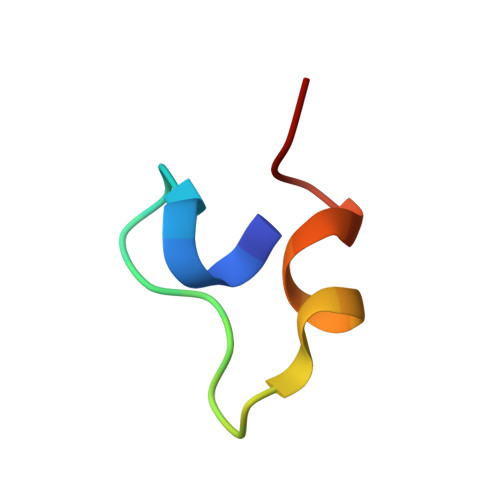Assessment of the robustness of a serendipitous zinc binding fold: mutagenesis and protein grafting
Sharpe, B.K., Liew, C.K., Kwan, A.H., Wilce, J.A., Crossley, M., Matthews, J.M., Mackay, J.P.(2005) Structure 13: 257-266
- PubMed: 15698569
- DOI: https://doi.org/10.1016/j.str.2004.12.007
- Primary Citation of Related Structures:
1WO3, 1WO4, 1WO5, 1WO6, 1WO7 - PubMed Abstract:
Zinc binding motifs have received much attention in the area of protein design. Here, we have tested the suitability of a recently discovered nonnative zinc binding structure as a protein design scaffold. A series of multiple alanine mutants was created to investigate the minimal requirements for folding, and solution structures of these mutants showed that the original fold was maintained, despite changes in approximately 50% of the sequence. We next attempted to transplant binding faces from chosen bimolecular interactions onto one of these mutants, and many of the resulting "chimeras" were shown to adopt a native-like fold. These results both highlight the robust nature of small zinc binding domains and underscore the complexity of designing functional proteins, even using such small, highly ordered scaffolds as templates.
Organizational Affiliation:
School of Molecular and Microbial Biosciences, University of Sydney, Sydney NSW 2006, Australia.















